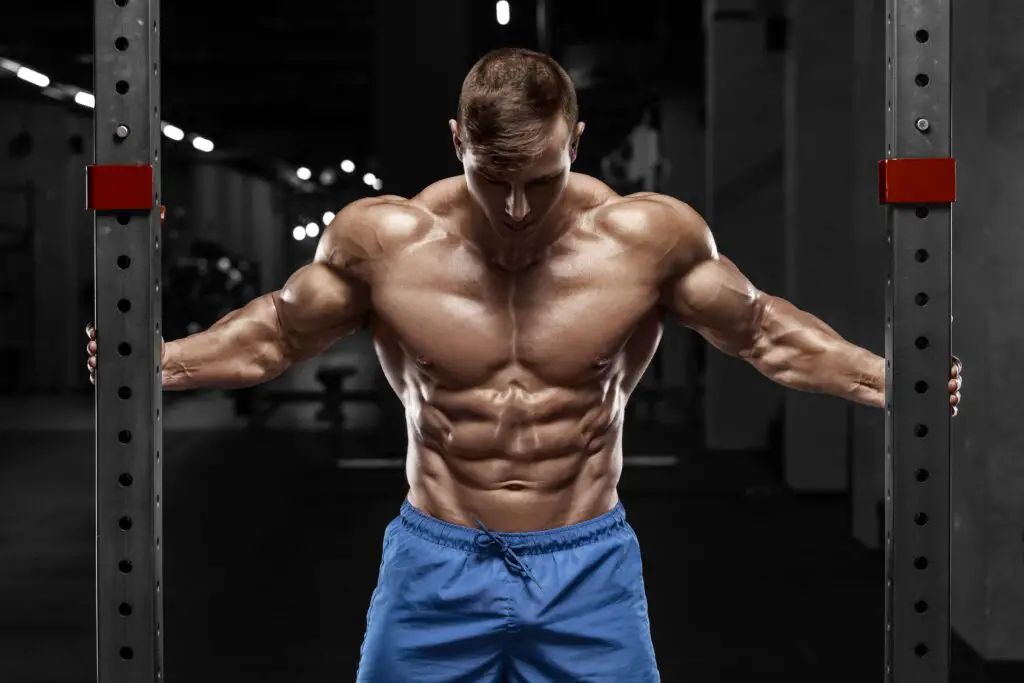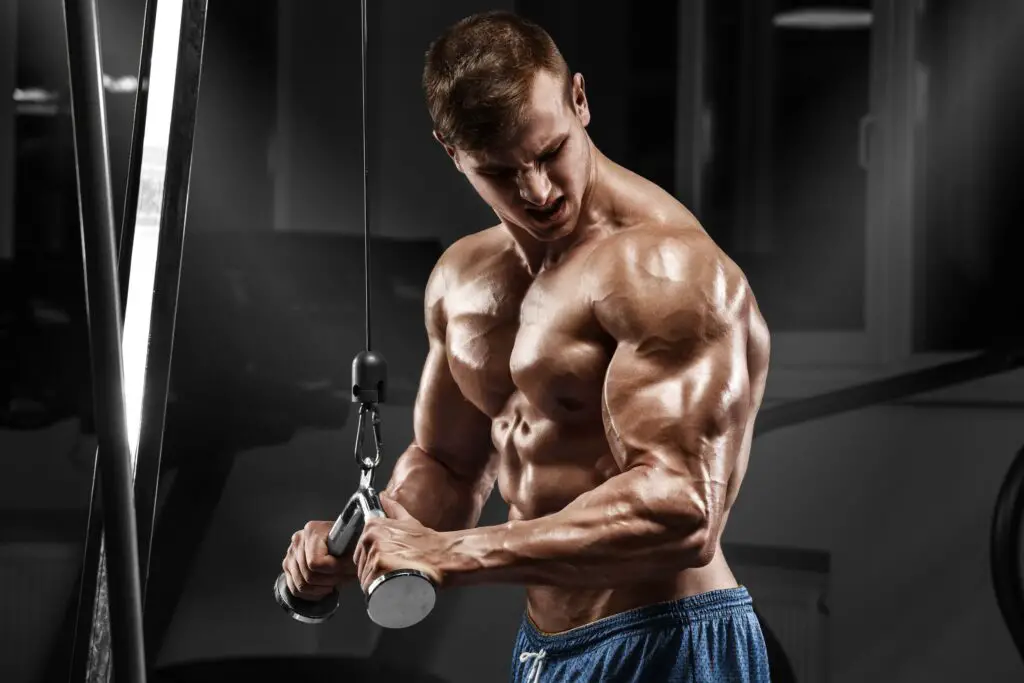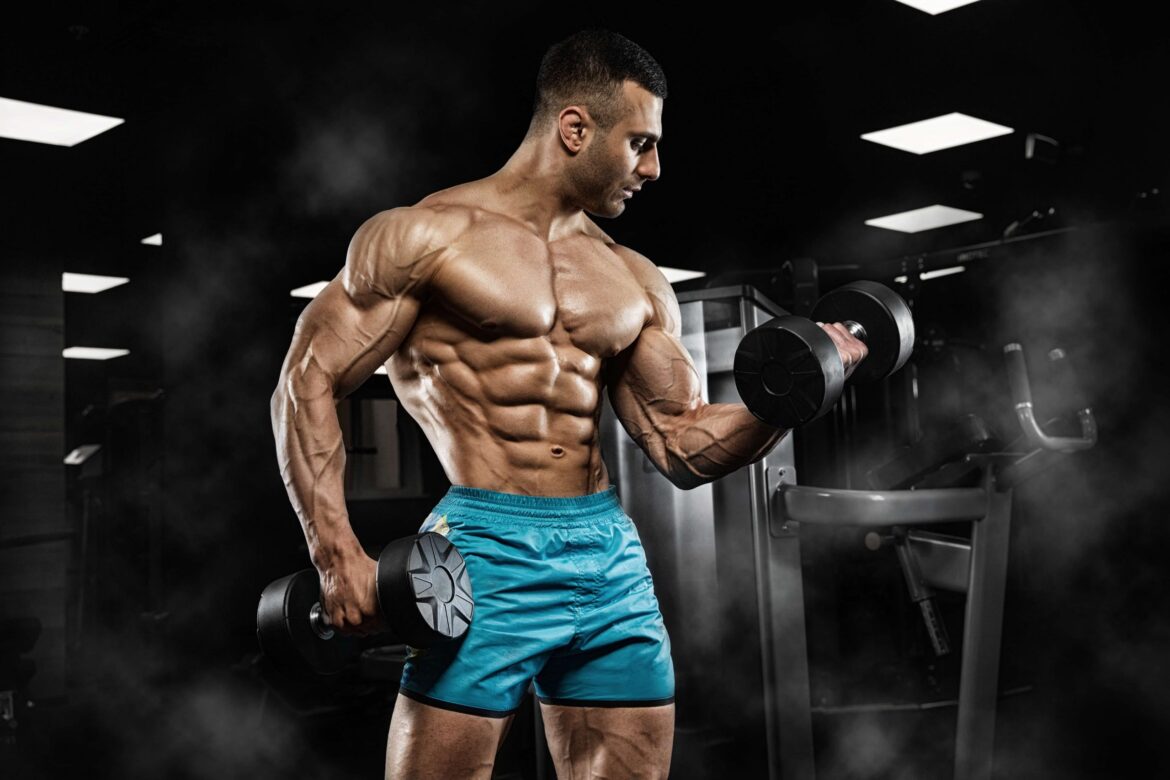Introduction
What Cardio Do Bodybuilders Do: Cardiovascular exercise, or “cardio” for short, is a vital component of a bodybuilder’s training regimen. While bodybuilding primarily focuses on building muscle size, strength, and aesthetics through resistance training, cardio serves as a complementary tool with various benefits. It encompasses activities that elevate the heart rate and increase respiration, such as running, cycling, swimming, or utilizing cardio machines like treadmills and ellipticals.
Bodybuilding cardio is strategically integrated into routines for a range of purposes, including fat loss, cardiovascular health, endurance improvement, muscle recovery, and calorie management. The type, intensity, and timing of cardio workouts can vary, tailored to individual goals and preferences, but they all contribute to the overall success of achieving a well-rounded, sculpted physique.
The bodybuilding, cardio isn’t merely an afterthought or a means of general fitness; it is a strategically incorporated tool with multifaceted benefits. These benefits encompass essential aspects of physique development, including the reduction of body fat to reveal muscle definition, enhancing cardiovascular health to support strenuous workouts, and improving endurance for extended training sessions.

Do bodybuilders do any cardio?
Bodybuilders do cardio. A bodybuilder’s main goal is to focus on whatever gets them to their goal the quickest, while keeping as much muscle on their frame as possible. This is important to note because it dictates their cardio entirely. In the offseason, their main goal is to build muscle.
Yes, bodybuilders do engage in cardiovascular exercise, commonly referred to as “cardio,” as a crucial component of their training routines. While the primary focus of bodybuilding is on building muscle mass, strength, and aesthetic proportions through resistance training, cardio serves as a valuable complementary tool with numerous benefits.
One of the primary reasons bodybuilders incorporate cardio into their routines is for fat loss and improved body composition. Cardio helps create a calorie deficit, aiding in shedding excess body fat and revealing the hard-earned muscle definition underneath. This is particularly important during cutting phases when bodybuilders aim to lean down and showcase their physique.
Cardiovascular workouts also enhance overall cardiovascular health, ensuring that the heart and lungs can support the intense demands of resistance training. This improves endurance and stamina, allowing bodybuilders to perform more sets and repetitions during weightlifting sessions without premature fatigue.
Cardio aids in muscle recovery by promoting blood circulation and removing metabolic waste products. It can reduce post-workout soreness, allowing for faster recuperation between training sessions.
The specific type, frequency, and duration of cardio may vary among bodybuilders depending on their goals. Some prefer steady-state cardio for longer durations, while others opt for shorter, more intense sessions like high-intensity interval training (HIIT). The choice of cardio is tailored to individual needs, but its incorporation into their routines underscores its importance in achieving a balanced, healthy, and aesthetically pleasing physique.
What cardio is best for building muscle?
Long bouts of steady state cardio have been proven to increase cortisol levels and break down muscle. Instead, opt for exercises such as high intensity interval training, walking lunges, sled drags/pushes/pulls, loaded carries, sprints that build muscle while burning fat.
Cardiovascular exercise is generally not considered the primary method for building muscle, as it primarily focuses on improving cardiovascular health and burning calories. Some forms of cardio can be more muscle-friendly than others, particularly when incorporated strategically into a well-rounded fitness routine.
Low-impact cardio exercises like cycling and swimming are often favored by individuals looking to build muscle because they are less likely to cause excessive muscle breakdown. These activities provide an effective cardiovascular workout while placing less stress on the joints and muscles. Cycling, for instance, engages the lower body muscles, especially the quadriceps and hamstrings, promoting strength and endurance development.
Another muscle-friendly cardio option is high-intensity interval training (HIIT). HIIT involves short bursts of intense exercise followed by brief periods of rest or lower-intensity activity. This approach can help build muscle while improving cardiovascular fitness, making it a popular choice among those seeking both strength and endurance gains.
It’s crucial to strike a balance between cardio and resistance training when aiming to build muscle. Resistance training, which includes weight lifting and bodyweight exercises, should be the primary focus for muscle development. Cardio should complement this by improving overall fitness, supporting recovery, and aiding in fat loss to reveal muscle definition. The best cardio for building muscle depends on individual goals, preferences, and how well it integrates with a comprehensive training program.
How many days do bodybuilders do cardio?
For general health maintenance and to gain the bodybuilding advantages of being cardiovascularly fit, recommend doing at least three, and preferably four, 30-minute cardio sessions a week. Try to complete them early in the morning, be consistent and, by walking away from the gym, you will become a better bodybuilder.
The frequency of cardio workouts in a bodybuilder’s routine varies based on individual goals, preferences, and the specific phase of training they are in. There is no one-size-fits-all answer to how many days bodybuilders do cardio, as it can range from none to several days per week.
Cutting Phase: During cutting phases, when bodybuilders aim to reduce body fat and achieve a lean, defined physique, cardio becomes more prominent. Many bodybuilders perform cardio exercises multiple times a week, often on most training days. This could range from 3 to 6 days a week or even more, depending on the intensity and duration of the cardio sessions.
Bulking Phase: In contrast, during bulking phases, when the primary focus is on building muscle and increasing overall body mass, cardio may be minimized or even eliminated. Some bodybuilders may opt for only occasional, lighter-intensity cardio to support cardiovascular health without risking excessive calorie expenditure.
Maintenance: In the maintenance phase, bodybuilders may include cardio as needed to maintain cardiovascular fitness, manage body composition, and support recovery. This could mean doing cardio 2 to 3 times a week or even less.
The frequency of cardio in a bodybuilder’s routine depends on their specific goals and how they choose to balance it with their resistance training. Individual preferences and responses to cardio can vary widely, so adjustments to the frequency and type of cardio should be made based on individual progress and goals.
Do bodybuilders do cardio to cut?
Bodybuilders typically perform both strength training and cardio during a cutting diet or pre-contest phase.
Yes, many bodybuilders incorporate cardio into their training routines during a cutting phase. Cutting, in the context of bodybuilding, refers to a period when individuals aim to reduce their body fat percentage while preserving as much muscle mass as possible to achieve a lean and defined physique. Cardio plays a crucial role in this process for several reasons.
Firstly, cardio workouts help create a calorie deficit, which is essential for weight loss. By burning additional calories through cardiovascular exercise, bodybuilders can effectively reduce their overall calorie intake, leading to fat loss. This calorie deficit is a fundamental principle of cutting.
Secondly, cardio enhances cardiovascular health and endurance, allowing bodybuilders to maintain the intensity of their workouts despite a reduced calorie intake. This is important for sustaining muscle mass and strength during the cutting phase.
Thirdly, cardio can aid in fat loss by increasing the rate of metabolism. High-intensity cardio, such as interval training, can boost metabolism not only during the workout but also in the hours following it, helping to burn more fat.
The frequency and intensity of cardio during the cutting phase can vary among bodybuilders, depending on individual preferences and goals. Some may opt for steady-state cardio, while others favor high-intensity interval training (HIIT) for more efficient fat burning. Ultimately, cardio is a valuable tool that supports bodybuilders in achieving the desired levels of leanness and muscular definition during the cutting phase of their training.
What cardio doesn’t burn muscle?
Stick to mostly low-impact cardio such as cycling, the elliptical or incline walking to save your recovery and energy for lifting. Focus on weight training instead of cardio. Keep your cardio sessions under 2-3 20-30 minute sessions per week if your main goal is to pack on muscle and strength.
Low-Intensity Steady-State (LISS) Cardio: LISS cardio, such as walking or cycling at a moderate pace, is less likely to burn muscle because it primarily relies on fat as a fuel source. It doesn’t place excessive stress on muscles and is often used during cutting phases to promote fat loss while preserving muscle.
High-Intensity Interval Training (HIIT): HIIT involves short bursts of intense exercise followed by brief periods of rest or lower-intensity activity. While it can be effective for burning calories and fat, it also places more stress on the muscles. However, its muscle-sparing effect comes from its shorter duration, which limits the potential for muscle breakdown.
Proper Nutrition and Recovery: To minimize muscle loss during cardio, bodybuilders and athletes should pay attention to their nutrition. Ensuring an adequate intake of protein and maintaining a positive calorie balance can support muscle preservation. Proper post-workout nutrition, including protein and carbohydrates, is crucial for recovery.
Balanced Cardio and Resistance Training: Combining cardio with resistance training in a structured workout routine is an effective way to achieve fat loss while preserving muscle. Resistance training helps stimulate muscle growth and retention, offsetting any potential muscle loss from cardio.
Does cardio increase testosterone?
Research suggests that strength exercises and high-intensity interval training (HIIT) can increase testosterone levels. Endurance-based exercises, like cardio, can potentially reduce testosterone.
Cardiovascular exercise, or cardio, does not directly increase testosterone levels to a significant degree. While it has numerous benefits for overall health and fitness, the impact on testosterone is relatively minor when compared to other factors such as resistance training and nutrition.
Resistance training, which involves lifting weights or performing bodyweight exercises, has a more pronounced effect on testosterone levels. It stimulates the release of hormones like testosterone and growth hormone, which are essential for muscle growth and maintenance.
There is some evidence to suggest that the type and duration of cardio exercise can influence hormonal responses. High-intensity interval training (HIIT), which involves short bursts of intense exercise followed by brief rest periods, may have a more favorable impact on testosterone levels compared to steady-state cardio.
The increase in testosterone due to cardio, if any, is relatively modest and temporary. It is also influenced by factors such as individual genetics, fitness level, and the overall workout routine.
If the primary goal is to increase testosterone, resistance training and proper nutrition are more effective strategies. Resistance training, coupled with compound movements like squats and deadlifts, can promote substantial hormonal responses and muscle development. A well-balanced diet that includes essential nutrients like protein, healthy fats, and micronutrients is also crucial for maintaining healthy hormone levels.
What is the number 1 cardio workout?
Running. A popular entry into exercise for beginners, running is free and doesn’t require any fancy equipment. Both running and jogging are excellent forms of aerobic exercise. Research even shows that running can reduce risk of obesity, high blood pressure, heart disease, cancer, type 2 diabetes and more.
It’s challenging to pinpoint a single “number 1” cardio workout because the most effective cardio exercise can vary depending on an individual’s goals, fitness level, preferences, and physical condition. However, one form of cardio that consistently ranks among the top options is running.
Running is a versatile cardiovascular activity that offers numerous benefits. It can be adapted to different fitness levels, from beginners to advanced athletes, and can be done virtually anywhere.
Calorie Burn: Running at a moderate to high intensity can burn a significant number of calories, making it an effective choice for weight loss and fat burning.
Cardiovascular Health: Running elevates heart rate and increases lung capacity, improving cardiovascular health and endurance.
Accessibility: You can run outdoors or on a treadmill, requiring minimal equipment or gym access.
Versatility: Running can be adjusted in terms of speed, distance, and terrain, allowing for customization based on fitness goals.
Stress Reduction: Many people find running to be a great way to relieve stress and improve mental well-being.
How do bodybuilders cut fat so fast?
A cutting diet reduces a person’s calorie intake to lose body fat while maintaining muscle mass. Cutting diets typically prioritize lean proteins, nutrient-dense vegetables, and whole grains. Bodybuilders and fitness enthusiasts often use a cutting diet after a bulking phase to achieve a leaner physique.
Bodybuilders often employ specific strategies to cut fat rapidly while preserving lean muscle mass. These strategies require dedication, discipline, and a well-structured plan. Here are some key techniques that bodybuilders use for fast fat loss:
Calorie Restriction: Bodybuilders typically create a calorie deficit by consuming fewer calories than they expend. This deficit is usually achieved through diet modifications. They monitor their daily calorie intake and gradually reduce it to encourage fat loss.
Macronutrient Manipulation: Bodybuilders adjust their macronutrient ratios to optimize fat loss while preserving muscle. This often involves increasing protein intake to support muscle maintenance and adjusting carbohydrates and fats to control overall calorie intake.
High-Protein Diet: Protein is essential for muscle preservation and recovery during a calorie deficit. Bodybuilders typically consume a high-protein diet to minimize muscle loss while cutting fat.
Cardiovascular Exercise: Cardiovascular workouts, such as running, cycling, or HIIT (high-intensity interval training), are common during the cutting phase. These activities help burn extra calories and promote fat loss.
Resistance Training: Bodybuilders continue to engage in resistance training (weightlifting) to maintain muscle mass. This helps them achieve a lean, muscular look even as they cut fat.
Supplements: Some bodybuilders may use supplements like caffeine, green tea extract, or thermogenic supplements to help increase metabolic rate and fat oxidation. It’s important to note that the effectiveness and safety of supplements can vary, so consulting with a healthcare professional is advisable.
Water Manipulation: In the days leading up to a competition, bodybuilders may manipulate their water intake to shed excess water weight temporarily. This is typically not recommended for long-term fat loss and should be done cautiously.
Tracking Progress: Bodybuilders closely monitor their progress, often through regular body composition assessments, such as body fat percentage measurements, to ensure they are achieving their fat loss goals.
Rest and Recovery: Adequate rest and recovery are crucial to minimize muscle loss and support overall health during the cutting phase.
It’s important to note that the extreme methods used by professional bodybuilders, especially in preparation for competitions, may not be suitable or healthy for the average person. Rapid fat loss can come with risks, including muscle loss, nutrient deficiencies, and metabolic slowdown.

Conclusion
Cardiovascular exercise, or cardio, is an indispensable tool in the arsenal of bodybuilders. The core of bodybuilding revolves around building muscle, strength, and aesthetics through resistance training, cardio provides a multifaceted set of advantages that complement and enhance their overall fitness journey. Cardio is the unsung hero in the world of bodybuilding, working silently in the background to complement the muscle-focused efforts of these athletes
The versatility of cardio allows bodybuilders to tailor their approach to match their specific goals, whether it’s fat loss during cutting phases or supporting muscle growth during bulking phases. The choice of cardio type, intensity, and duration is a personalized decision, but its incorporation remains a constant in the pursuit of a sculpted and well-rounded physique. In the world of bodybuilding, cardio is not just about burning calories.
Cardiovascular exercise is not merely a means to an end for bodybuilders; it’s a holistic approach to fitness that encompasses a range of benefits. It’s the pathway to achieving that covered lean and sculpted physique. It’s the engine that drives fat loss, revealing the chiseled muscles beneath. It’s the safeguard that ensures a healthy heart and robust lungs to sustain the rigorous demands of intense workouts.

